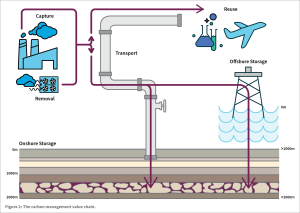What is Carbon Management?
Carbon capture, removal, transport, reuse, and storage technologies, commonly referred to as carbon management, are a portfolio of safe, effective, and increasingly cost-effective emissions technologies to manage, abate, and remove CO2 and CO emissions from industrial facilities, power plants, and directly from the air. Captured CO2 or CO is then reused to make valuable products or transported to appropriate sites for geologic storage.






